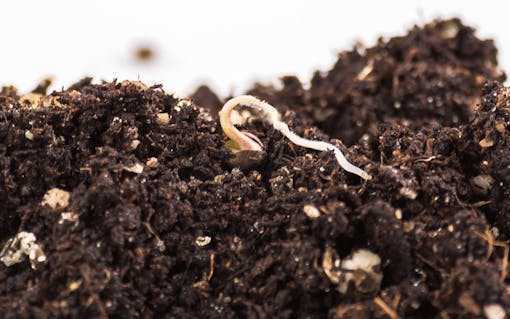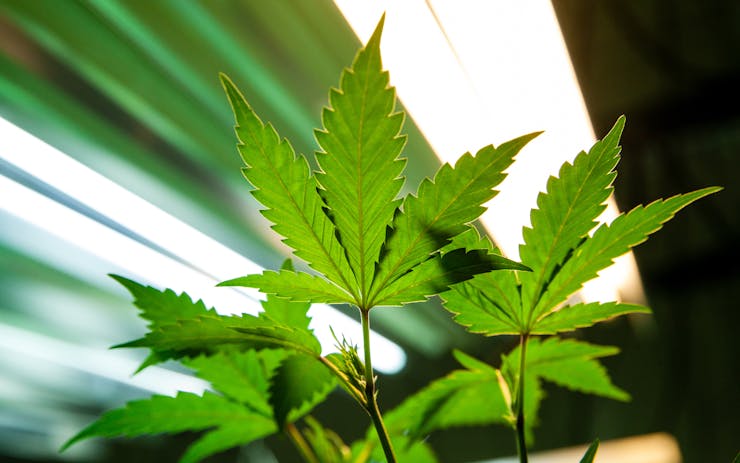Growing and maintaining your very own indoor cannabis garden can easily burn a hole through your pocket. Between frequent visits to a hardware store and the local hydroponics shop/garden center, building out and maintaining even a small home grow can be quite expensive. Add on recurring monthly utility expenses and the inevitable costs of growing and maintaining a cannabis grow with changing seasons and the final overhead can quickly burn a hole through your “budget grow.”
One way to heavily reduce overhead in your garden is to incorporate sustainability practices throughout your operation. Every decision you make in your grow, from the lighting you choose to the medium you plan to grow in, will have a variable impact on your spending over time. Listed are a few helpful, cost-effective strategies to consider for incorporating sustainable practices into your indoor cannabis garden.
Cannabis grow lights with lower energy output

If you’re running a small grow, say a less than 1000w light system, chances are you aren’t overly concerning yourself with the electrical nuances. However, having a basic understanding of the electrical system in your home can give you a great advantage when setting up the most cost-effective garden possible.
Here’s an example: Most homes are equipped primarily with 110v circuits, though in areas such as the kitchen and bathrooms, there are often 220v circuits. This is because your refrigerator and washer/dryer tend to run at 220v. If you’re running these circuits at 80% capacity (the recommended max), at 110v, you’re afforded just under 1800w of available power, doubling that number for 220v. Between a light system, fans, air conditioners, dehumidifiers, heaters, and the variety of other energy-sucking mechanisms at play in your garden, running up wattage may be easier to do than you thought.
Consider growing with lights that require less energy, such as LED systems, ceramic metal halide or LEC (light emitting ceramic) lights. Many growers prefer to spend the extra money up front for these lights in order to save more over time in their energy bill. Dollar for dollar, LEDs are the most sustainably cost-effective solution for lighting in an indoor home grow. LECs are not too far behind either, with a 300w system producing results similar to what most 600w HID systems will give you.
When incorporating climate control solutions into your garden, consider natural solutions. Many times, creating airflow pathways in and out of your garden can reduce temperatures to the point where air conditioner units become unnecessary. Practices such as running lights at night are also a great way to take advantage of the natural cool air. By reducing the need for various devices, you’re naturally bringing your energy bill down while alleviating your circuits from unnecessary stress.
Sustainable cannabis grow mediums

Another cost-effective strategy is to incorporate the most sustainable grow medium possible into your regimen. No-till, organic gardening practices are a great way to make your garden more sustainable. By building and maintaining an active food web within your soil, containers almost never need to be changed out between grows; simply remove the root ball and re-transplant.
Organic gardening is much less expensive in that proper super soils require little to no amendments over time — their nutrients are readily available within the soil. Feeding regimens for an all-organic grow are often simply reverse osmosis water, and that’s it, thus, eliminating the need for expensive nutrients that must be refilled over time.
Many organic garden remedies can be concocted using simple everyday household ingredients, another cost-effective way of eliminating expensive small bottles that seem to disappear all too quickly.
Cloning cannabis for perpetual growers

Heading to your local dispensary to pick up new clones or seeds after every grow season can be costly. One way to reduce overhead over time is to create your own cloning regimen within your garden. The initial upfront cost for a small cloning space can be surprisingly low if you stick to the basics. Over time, having a perpetual garden equipped with a cloning area will save you hundreds of dollars in seed/clone costs.
To get started with cloning you will need a small t5 fluorescent light (24” will do just fine). You’re also going to need a cloning tray with a dome in order to retain proper relative humidity for the clones to root out. A few other helpful items to purchase up front are cloning gels, aerated grow mediums such as coco or rock wool cubes, thermometers and hygrometers, and a sterilized blade of some sort.
Again, the upfront cost of these items may set you back a few dollars, but this will save you lots of money over time. More expensive cloning units are available and may be a solid investment if you plan on incorporating cloning into your long-term grow plan.
The power of DIY cannabis gardens

With grow technology advancing at a rapid pace, it becomes easy to rely on new innovations to outfit our gardens with the latest products. Keep in mind, however, that while some purchases are unavoidable, you don’t necessarily have to break the bank in order to get your grow started. If you have the time to invest, consider a DIY buildout as a cost-effective way to manage your low overhead garden. DIY projects almost always require less monetary investment so long as you’re willing to add a little elbow grease.
Keep in mind that DIY grow builds may have some learning curves to overcome. Luckily, with the Internet at our fingertips, and a large community of DIY growers eager to share their information, you should be able to find a blueprint to any given project relatively easily.
Sometimes, getting creative is what it takes to reduce overhead in your garden. With these four basic cost-effective strategies, hopefully you’ll be able to build a more sustainable grow that will end up saving you in the long run. By reducing your energy output through smart purchases and careful planning, choosing a sustainable grow medium, incorporating cloning techniques, and embracing the power of DIY, you can substantially bring down your overhead over time.





